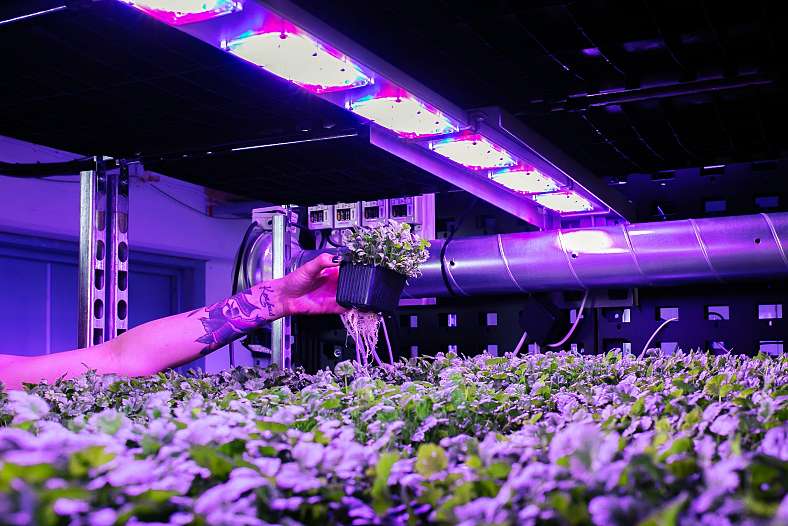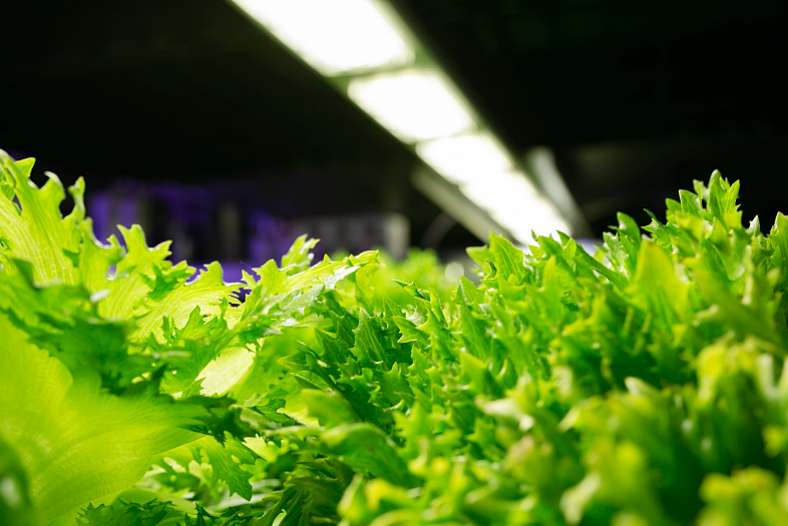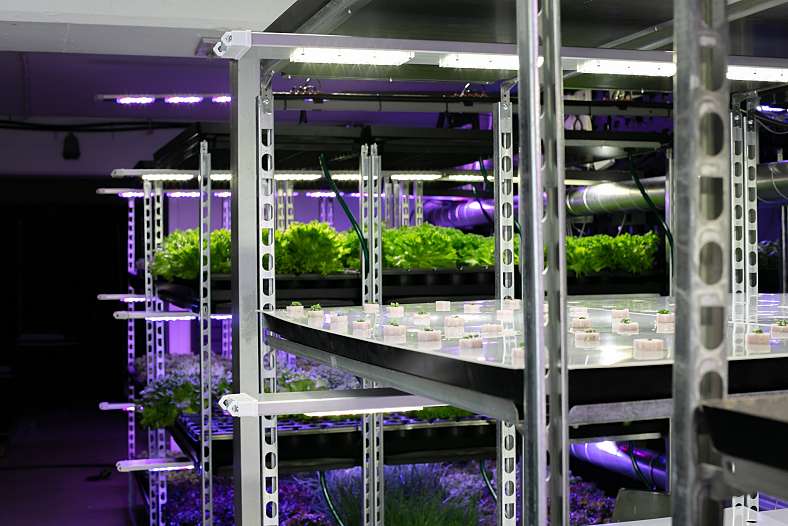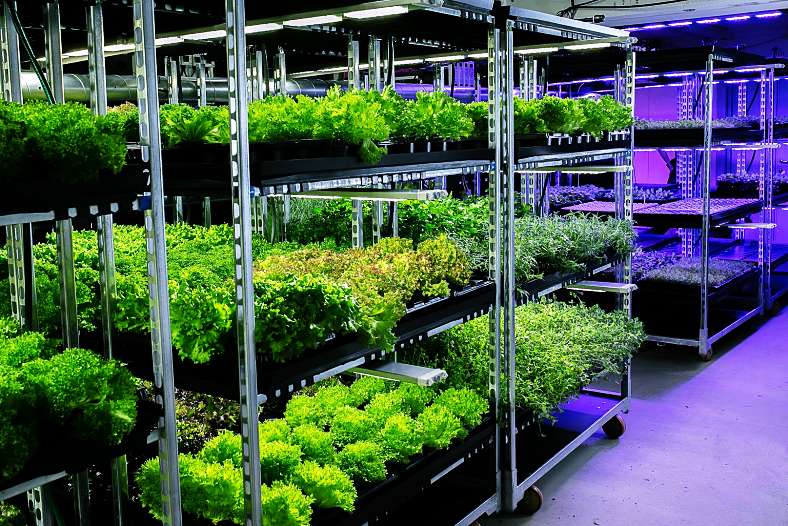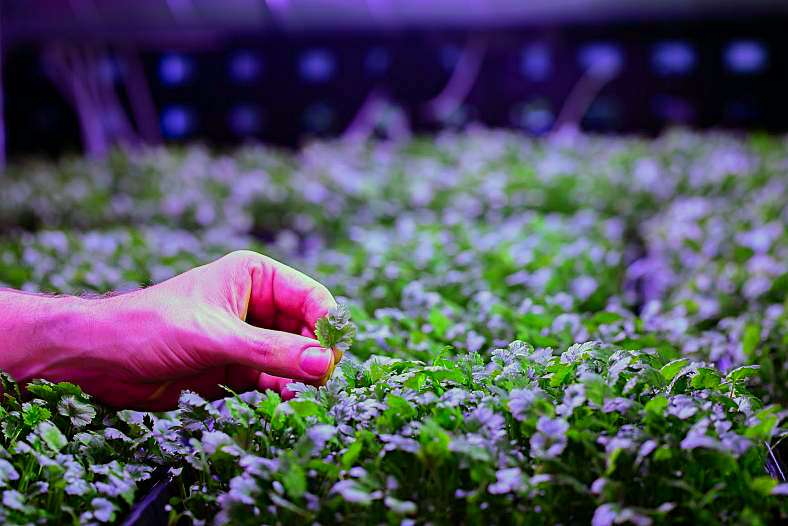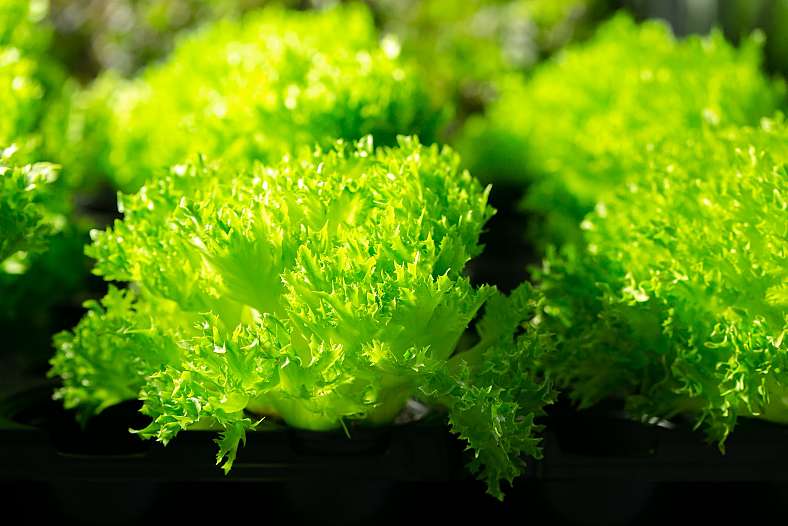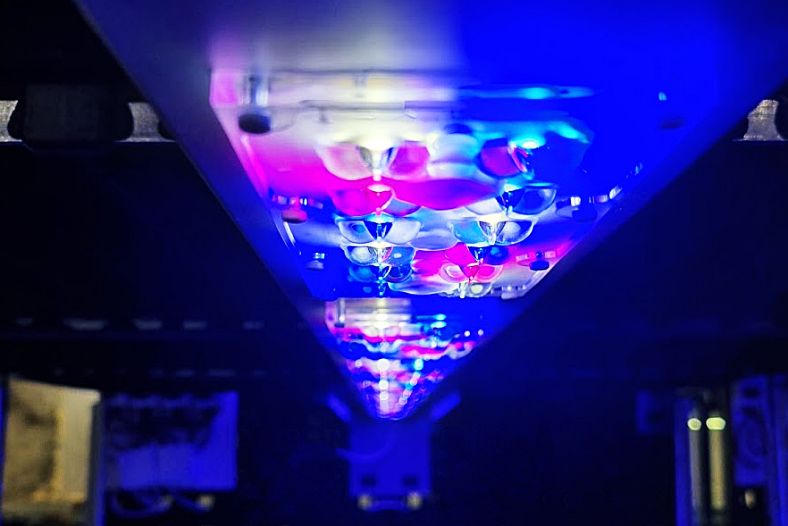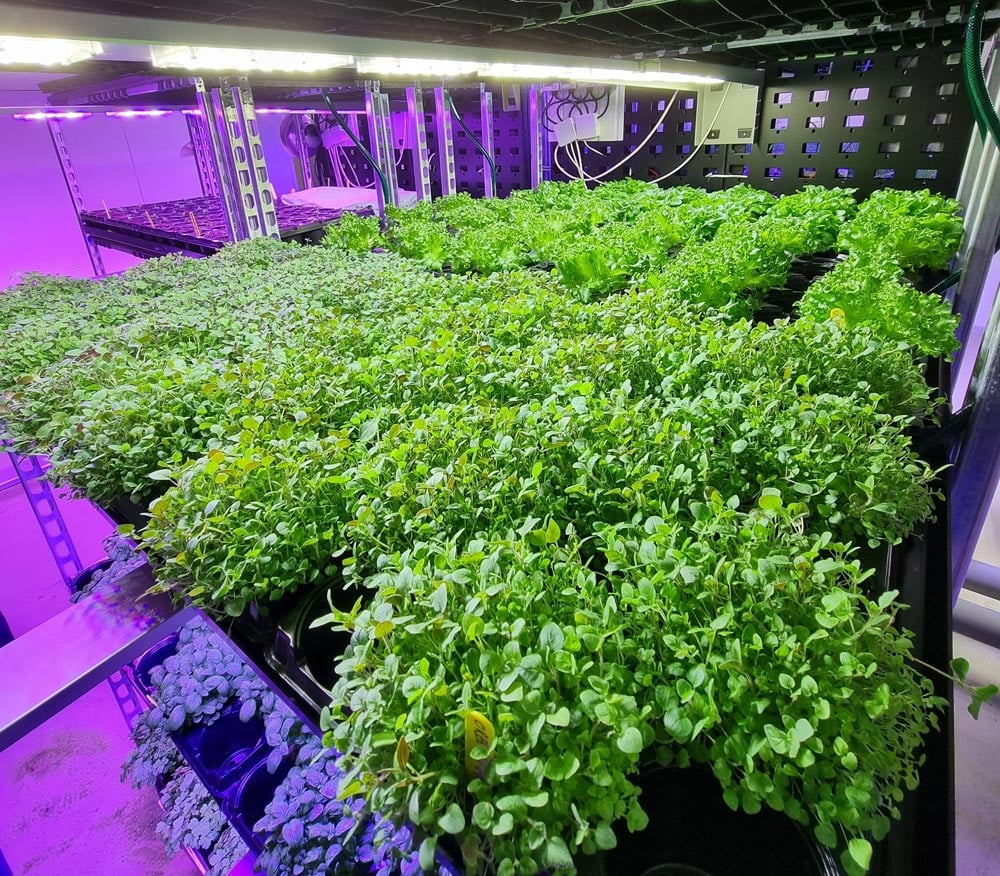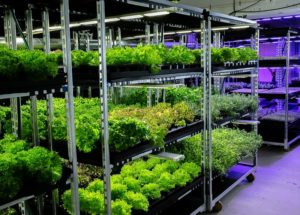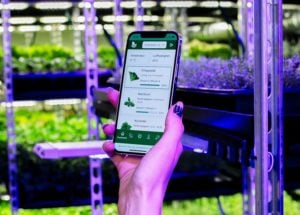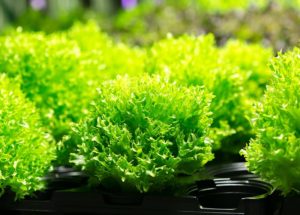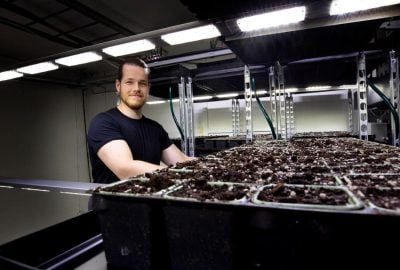When it comes to the pros and cons of vertical farming, environmental impact is a heated topic. The question is whether sustainable solutions of vertical agriculture outweigh the massive power surge? These are seven ways that vertical farming is good for the environment and one way it isn’t.
Vertical farming is designed for sustainable food production. It prevents deforestation, promotes resource recycling, limits spillage, and avoids chemical use. In addition, emissions from farming machinery and land transport are very low.
Energy consumption is the only real obstacle in the way vertical farming. However, scientists are working to bring down LED consumption and cost as we speak. Once they do, vertical farming will be more profitable and wholly sustainable. Read more about this in our article about vertical farming’s biggest challenges.
Our future food industry is in trouble. The world’s population will reach 9 billion by 2050 but cannot be fed by today’s farming methods. Traditional farming accounts for 24% of our global gas emissions and will leave the planet in ruins if it expands to feed 9 billion people.
Vertical farming, on the other hand, has the potential to combat environmental breakdown. So, let us tell you about the seven sustainable ways of vertical farming.
Related article: Vertical farming vs. traditional farming
How vertical farming combats environmental breakdown
In many ways, vertical farming has succeeded in making large-scale food production more sustainable. The fewer resources spent, the better, and vertical farming have reduced all but power consumption.
In short, it makes no use of arable land. Compared to traditional agriculture, it drastically reduces water consumption. In addition, vertical farms naturally shelter the crops. This is why vertical farming rarely makes use of chemicals or pesticides.
On top of that, the vertical farming business model is based on plant growth in close vicinity of the customer base. This means that vertical farming limits emissions from both land transport and farming machinery.
That was the short version. Here comes the seven environmental upsides to vertical farming:
1. Vertical farming doesn’t degrade arable land
Vertical farming is all about in-house plant growth. It does not require any arable land. In this way, vertical agriculture contributes to tackling two very important challenges in the world:
- Deforestation
- Loss of biodiversity
Traditional agriculture causes about 80 % of our worldwide deforestation. By doing so, it also ruins the natural habitat of many species.
Vertical farming can make amends by taking over some food production. This might just give degraded farmlands the breathing room it needs to regenerate and eventually return to their natural state. When agriculture stops using invasive methods, ecosystems and biodiversity will also flourish again.
Personally, I also have some thoughts and perspectives on vertical farming and saving space:
Plant growth in vertical layers saves enormous amounts of space. It is an opportunity to reduce deforestation and degradation of arable land.
Forests are one of the biggest contributors to reducing the concentration of CO2 in the atmosphere. Figuratively speaking, forests are the lungs of the earth. If you can take large parts of the world’s agriculture indoors in stacked levels, we will free up large amounts of land that can become forests. It will also increase biodiversity and reduce emissions of chemicals and fertilized water.
2. Water pollution is effectively stopped
Spillage of nutrient-rich, fertilized, water is called eutrophication. The result of eutrophication is tha plant growth in the water increases due to the supply of nutrients. Sometimes this happens naturally, but many times spillage causes forced eutrophication.
Unfortuneately, traditional farming almost always leads to eutrophication. As a consequence, we notice an increase in the primary production of planktonic algae. This results in less oxygen at the bottom of the lake, where biomass is broken down.
Less oxygen at the bottom of the lake can lead to a greater release of phosphorus from the sediments. It can also have major consequences on the pH value in the water, which can lead to the extinction of natural planktonic algae communities and the emergence of unfavorable microorganisms.
In vertical agriculture, the risk of eutrophication is almost non-existent. The plants are grown in a closed environment. This prevents the used water from flowing into rivers, lakes, and the sea.
The water is purified and recycled, which means that you get a full return on it rather than wasting it.

3. Vertical farms recycle freshwater
Agriculture is one of the world’s largest consumers of freshwater. Agriculture accounts for about 70-80 % of the world’s fresh water consumption.
When around 2 billion people in the world live with a shortage of freshwater, it is more important than ever for the agricultural sector to reduce its water consumption.
Vertical farming has managed to reduce consumption by 95 %, in some cases by as much as 99 %.
Let’s look at an example: producing 1 kg of tomatoes in a field in Southern Europe requires 60-200 liters of water. To produce the same amount of tomatoes on a vertical farm, you only need 2-4 liters of water.
Avisomo’s control systems place great emphasis on this. We have sensors that monitor the humidity in the production and make sure that there is as little evaporation as possible by reducing the number of water surfaces in the system.
How is consumption reduced so much?
Many vertical farms use hydroponic and aquaponic systems where the water flows through a closed system. This means that it does not run off like outdoors, and the plants can use 100% of it.
Vertical farms also use dehumidification systems that collect, purify, and recycle the water released through transpiration from the plants.
This means that the only water that actually leaves the production is bound in the plants that are sent to the market.
The rest of the water is recycled and reused.
4. Fossil fuel emissions are drastically reduced
In traditional agriculture, one needs to use large agricultural machines to sow, fertilize and harvest the crops. These agricultural machines usually run on diesel, i.e. a fossil fuel.
Greenhouse plant growth usually doesn’t require machines. However, some locations require substantial heating in large parts of the year. There are many alternative heating solutions that are economically viable.
For example, wood chip or oil heating is often more profitable than electric heating, but this emits large amounts of greenhouse gases.
When you move production into a vertical farm, you eliminate the need for these agricultural machines and alternative heating. A well-isolated building won’t need any more heating than the LED grow lights provide. During the parts of the year where the facility needs cooling down, your farm should either be in a strategically good location or use electricity from renewable sources.
You obviously use electricity for ventilation and lighting as well, but with the access to renewable energy in Norway, this is not a problem.
Improved biodiversity is another upside of not using large agricultural machines. Naturally, wildlife thrives better when not disturbed by machines.
5. Chemicals and pesticides are rarely used
In vertical farms, plants grow in a controlled and closed environment. Because of this, the risk of pest infestation is very small. This way you can avoid having to use pesticides.
Due to the controlled climate, you also do not have to worry about various fungal diseases, which eliminates the need of chemicals.
In ordinary agriculture, it is also common to spray perishable foods with chemicals to extend the shelf life of the products. With a vertical farm, you do not need to add preservatives and other chemicals before transport, because the produce reaches the shops in a very short time.
In this way, consumers can eat their food without worrying about ingesting chemical residues. We like to call it “better than organic”, but that’s for the consumers to decide.
6. Vertical farming is based on minimal food transport
Food transport over large distances is an integral part of traditional farming. This contributes to fossil fuel emissions and increases the amount of carbon in the atmosphere.
One of the reasons that food transport is so widespread, is that traditional agriculture usually takes place far away from urban customer bases.
In Norway, the climate has also affected the production of several different types of vegetables.
Today, Norway imports around 50 % of the vegetables we eat. Many of these vegetables are heavy, such as cucumber and tomato.
We eat large quantities of these vegetables. Instead of importing these vegetables, in the long run it will be possible to produce these vegetables with good results in vertical farms in Norway. This is because you can have full control of the climate in an energy-efficient way in well-insulated buildings.
Vertical farms are often located close to its customer base. The reason for this is simple: Vertical farms can be started practically everywhere. This is a huge advantage and a central part of their business strategy. Vertical farms supply plant growth where the demand is right.
Shorter distances between the production site and the store shelves also means less food waste because the food has a longer shelf life when it arrives at the store.
Ability to bypass other production methods
Eventually, we will be able to fine-tune all the costs so vertical farms are as efficient as possible. This will allow you to get an upper hand on all other production methods.
Avisomo does this by using digital plant recipes that can be found in your system. If you install the Avisomo system in your farm, we will always make software updates that optimize the use of air conditioning, irrigation systems and lighting.
Operating indoors in a highly technical environment has a huge advantage. The room for improvement is virtually endless. New methods and techniques are bound to be developed. In the last couple of years alone, vertical farming has evolved quickly. Soon, the limits of food production will expand again.
The exciting thing right now, is that all the vertical farming components have become extremely efficient. The most important decision these days is how to use and control these components. In Avisomo, we spend a lot of time figuring this out.
7. Energy efficiency: The environmental hurdle that makes or breaks vertical farming
Lets be honest, vertical farming has come to far to ever be broken. The question isn’t if, it is when will vertical farming be wholly sustainable. It’s true that LED grow lights require copious amounts of energy. It is also true that the latest LED lights on the market are more energy efficient than ever before.
LED grow lights technology has made amazing strides in the last couple of years. In 2021, LED became so cost effective that many struggling vertical farms started to turn a profit. And the technology is still young. Researchers around the world are working to further bring down the cost of vertical farming.
Relevant article: Why is LED grow lights best for vertical farming?
Smart solutions will bring the energy consumption down and make better use of excess power. One such solution in progress is the development of better solar panel technology. Another solution to consider is to heat adjacent buildings or growth facilities with excess heat from your vertical farm.
Read more about the future of indoor agriculture in our article about research on vertical farming.
Yes, vertical farming is not perfect, but its potential for combating environmental breakdown is immense. It is only a matter of time before indoor plant growth is the most sustainable food production method on the planet. Still, it won’t be good enough.
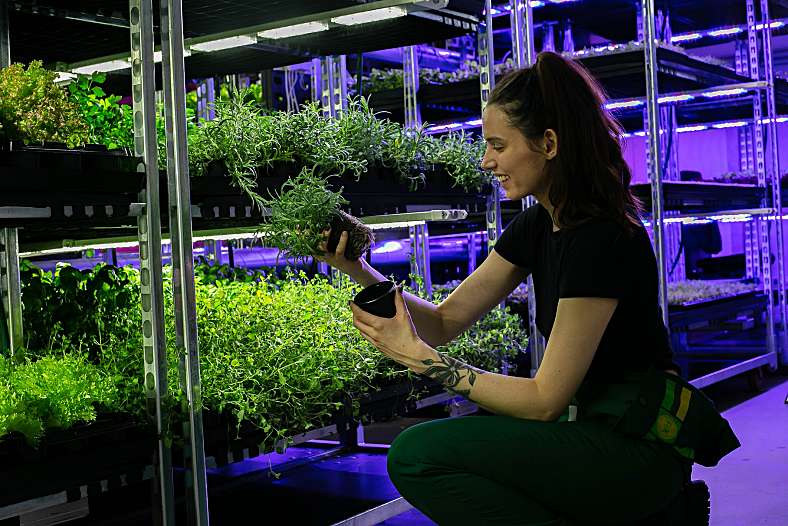
Environmental turnaround takes more than vertical farming
As you can see, there are many benefits to gain from vertical farming. That doesn’t mean that it solves our upcoming food production challenges. Vertical farming is highly dependent on being located in areas that have challenges with water shortages, expensive or difficult land areas, or harsh climates.
Here in Norway, vertical farming has a natural place in our food production. With our harsh winters and access to green energy, we can produce many of the vegetables we otherwise import. In this way, Norwegian producers can increase revenues.
Related article: Vertical farming – From concept to profit
By using the naturally cool climate and the good infrastructure we have with green energy, it is only a matter of time before this will happen and who will do it.
Avisomo believes that established Norwegian manufacturers clearly have the greatest benefits from starting vertical farms. Therefore, our system is designed to fit into existing production. We have collaborated with Norwegian farmers, and we have been very careful to account for established standards in the industry.
Related article: How to reduce vertical farming energy consumption?


